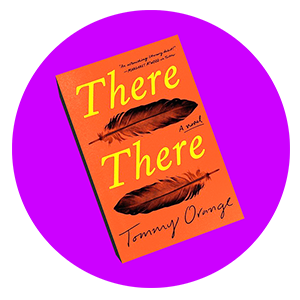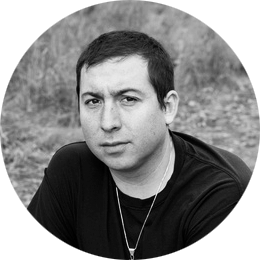Let’s Find the There There
Hello Deep Readers!
Welcome to the first of four installments exploring Tommy Orange’s novel There There. Our goal is simple—to enhance your reading experience by sharing some of the perspectives and questions raised by scholars here at UC Santa Cruz. We hope you’ll find your experience inspiring, and we hope you’ll gain new skills to approach everything you read in a deeper and more engaged way.
Today, we present a primer on digging into There There: we look at the practice of deep reading, think about the novel in a literary context, and propose some exploratory questions as you begin the novel.

First Things
For those new to the Deep Read, here’s a quick rundown of what to expect over the next month.
- Weekly emails: Each weekly installment will draw heavily from the input and observations of our UC Santa Cruz scholars, and it will pose a set of questions for you to consider as you read.
- Community conversations: Each week, we’ll link to a web version of our email content with an active comment section. We invite you to share your reflections, ideas, reactions, and experiences with the Deep Read community and begin conversations with other Deep Readers.
- Deep Read salons: All Deep Readers (you!) are invited to 3 virtual salons we’re hosting in February with our participating scholars and members of the Amah Mutsun Tribal Band, the tribe indigenous to the Santa Cruz region. Register for any or all of the salons listed at the bottom of this email to discuss the book with our panelists and dig deeper into the novel with the Deep Read Community.
- A Conversation with Tommy Orange: Our month-long exploration of the novel will culminate in a free, live, online event with Tommy Orange in conversation with UCSC Creative Writing Professor Micah Perks on Wednesday, March 3, 6:30 PM Pacific. RSVP here.

Ways of Reading

We hope you have your copy of There There in hand and are starting to read. As you begin the novel, we think it’s important to ask this fundamental question: how do you read deeply? We asked our participating scholars that question, and based on the diversity of their responses, it’s clear that there’s no single way to read deeply. Here’s what they had to say:
Mayanthi Fernando, Anthropology
I physically interact with the book, so I don’t read on my iPad. I don’t read on a digital device. And I read it with a pencil and a highlighter, even when I read fiction. I do this because I like to get into the page and underline something and write next to it what it makes me think about.
Renya Ramirez, Anthropology
I need to find a quiet place where I can completely focus—where I’m not multitasking. And then I try to use not just my mind, but also my emotions. I focus on how what I’m reading is making me feel. In this way, reading deeply becomes like a spiritual experience. Because, as you’re reading, you’re in somebody’s world, but you’re also in your own world.
Katie Keliiaa, Feminist Studies & Indigenous Studies
I like to immerse myself in the text and go down a rabbit hole with the author—follow them on social media, learn about their background and travels that informed the work. I like to research and dive deeper into the world the author has created.
Micah Perks, Literature & Creative Writing
I get very addicted to plot, and it sometimes gets in the way of me reading deeply. So, if I want to read carefully and slowly, if I find myself rushing to find out what’s going to happen, I’ll read the end and then go back. Other ways I read deeply include looking closely at the patterns that come up over and over—images that keep reappearing, questions that are asked over and over or in different ways.
Go deep: How will you read deeply? Do any of these deep reading approaches reflect your own approach to books? How might you read Tommy Orange’s novel differently as a part of the Deep Read program?

New Native Renaissance
There There, published in 2018, is Tommy Orange’s first novel, and focuses on a loosely connected group of Native Americans in and around Oakland, California. It’s clear from the Bertolt Brecht poem that starts the book—and the many cultural and literary references throughout—that Orange is as much in conversation with the urban, Native American experience as he is with the broader cultural currents, past and present.
Here’s what Orange says of the title, There There, and its meaning to the overall work:
In Everybody’s Autobiography by Gertrude Stein [published in 1937], she references Oakland by saying, “There’s no there there.” She’s talking about how where she grew up was all developed over and unrecognizable. As soon as I found that quote, because I wasn’t a Gertrude Stein reader or knew the quote all along, I recognized the parallel to Native people’s experience and this idea of there not being a “there there” for the land that was here before and the people that we were. “There there” is also a reference to Oakland and trying to find a way to belong in Oakland as Native people. There are other ways that I tried to use it throughout the book that are subtler, but that was the basic idea that I wanted to dig into.
As you’ll see, Tommy Orange moves the center of Native experience from the reservation, where many of the previous generation of Native writers set their stories, to the city, where the majority of Native people now live. Orange pushes the boundaries of the literary novel by beginning with an evocative essay on the history of the fetishization, violence, and erasure of Native peoples, and, in the process, takes up the new issues that Native people face when they relocate to cities, live with other groups of people, and attempt to find a foothold in a culture that largely denies both their existence and the genocidal history to which they have been subjected.

In the introduction to her UC Santa Cruz class on There There, Professor Laura Martin highlights the novel’s reception and connection to broader literary history: “In the short span of time since its publication, There There heralded what some critics are calling the New Native Renaissance.” This new wave is said to follow in the footsteps of the first Native Renaissance, which extended from the 1960s to the 1990s and included writers such as N. Scott Momaday, Joy Harjo, Louise Erdrich, Sherman Alexie, and Leslie Marmon Silko.
The New Native Renaissance, while focused on similar concerns as the previous generation of native writers—the marginalization of native life, the exploitation of native lands, the continued erasure of native experience from the historical record, and the social problems and widespread traumas that follow—takes on these issues with renewed political intensity and stylistic experimentation.
Go deep: As you begin to read, you might want to consider what is driving this political intensity and experimentation. Is there a connection between stylistic experimentation and an increased awareness of ecological catastrophe, white supremacy, the erosion of democratic ideals, and recent Indigenous activism, such as the 2016 protests at Standing Rock? How do you see political concerns such as these at play in the novel? What are some thematic patterns that emerge? How would you describe the form of the novel, and how might the form relate to some of the patterns that you notice? Finally, what are other examples of “there there” that you notice as you read, and how do the changing meanings and context of the phrase inform your understanding of the novel?
Join the community conversation: We encourage you to think through these questions as you read and share your thoughts in the comments below
Community Conversation
Share your thoughts, reactions, and ideas with the Deep Read Community. Please note, comments are moderated and won’t populate immediately. Send any questions to deepread@ucsc.edu.

